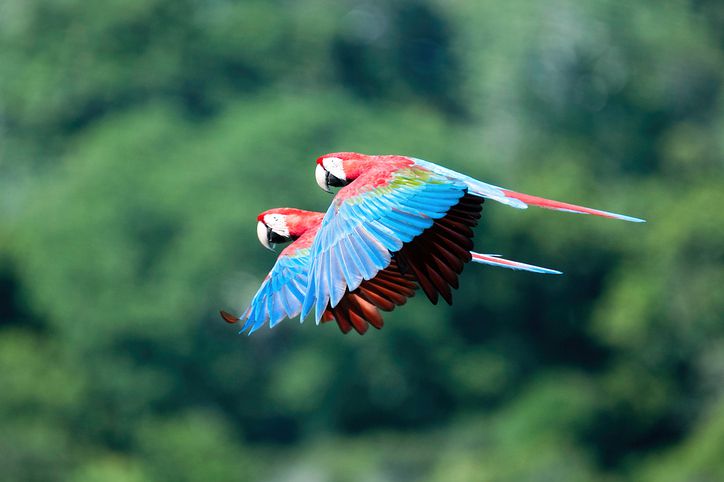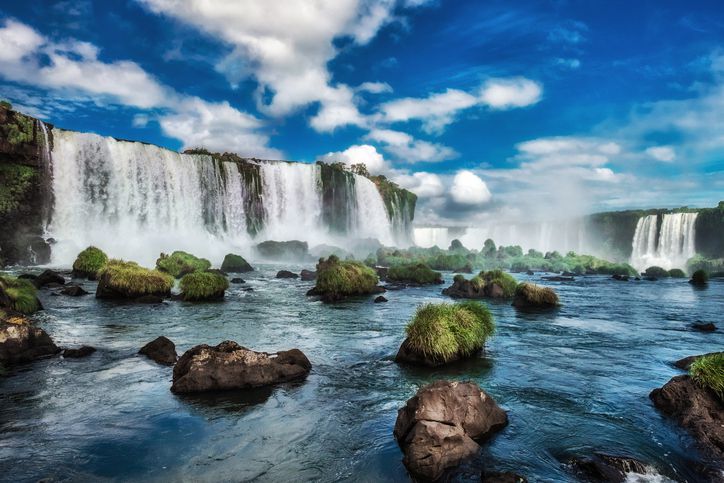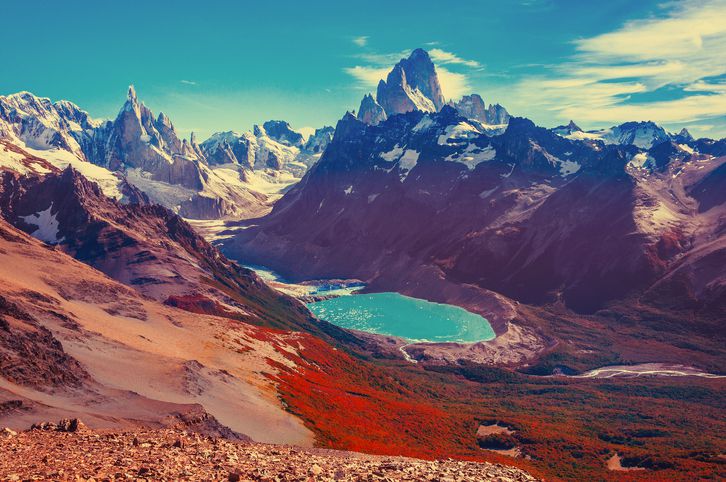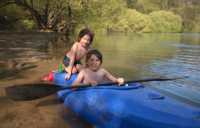South America’s natural geography is formidable. Home to the highest uninterrupted waterfall, largest river, longest mountain range and largest rainforest, it is also a place inhabited by a wealth of flora and fauna, making it one of the most biodiverse continents on earth.
Chances to dive into nature in South America are plentiful; with over 300 national parks covering huge expanses of the continent’s eleven nations, there’s never a shortage of wild places to discover. Here are six that need to find a place on your bucket list.
-
Madidi National Park, Bolivia
Located on the edge of the high Andes Mountains and stretching into the Amazon Basin, Madidi National Park is considered by scientists to be one of the most biodiverse places on the planet as it contains around 11% of the globe’s bird species.
 Dense tropical forest hides animals ranging from a large population of jaguars to the South American tapir and various species of monkeys. Jungle trails and mosquito net-hemmed lodges allow visitors to get closer to this incredible natural place.
Dense tropical forest hides animals ranging from a large population of jaguars to the South American tapir and various species of monkeys. Jungle trails and mosquito net-hemmed lodges allow visitors to get closer to this incredible natural place.
-
Galapagos National Park, Ecuador
Few places on earth can compete with the Galapagos National Park and its opportunities for coming into contact with native wildlife. Upon arrival to the islands, visitors are greeted by the sight of lounging sea lions and huge Galapagos tortoises shuffling along the shoreline.
Cruises tour the Galapagos Islands, inviting passengers to hop off onto landscapes that have barely changed since the dawn of time and where unique, endemic species exist in a fragile, precious natural environment.
-
Iguazú National Park, Argentina/Brazil
Situated on the border between Brazil and Argentina, Iguazú National Park is best known as the home of the world’s largest system of waterfalls. Made up of two separate sections on either side of the border, this national park and UNESCO World Heritage Site not only protects the falls but the surrounding subtropical jungle.
 Many rare and threatened species are found here, including jaguars, anteaters and the yacare caiman, as well as a plethora of birdlife such as toucans and the great dusky swift, the latter of which is known to perch on the walls behind the surging water of the falls.
Many rare and threatened species are found here, including jaguars, anteaters and the yacare caiman, as well as a plethora of birdlife such as toucans and the great dusky swift, the latter of which is known to perch on the walls behind the surging water of the falls.
-
Torres del Paine National Park, Chile
Wedged between the Chilean fjords and the Andes Mountains and containing a swathe of the Southern Patagonian Icefield, Torres del Paine National Park is a veritable feast of pristine nature.
Crisscrossed with paths, the most famous being the four-day W trek and the nine- or ten-day Circuit or O, this national park comprises glaciers hanging perilously off the edges of mountains and meltwater lakes that reflect the changing weather. It’s also home to an important population of pumas, as well as an excellent place to spot South America’s most revered bird, the Andean condor.
-
Los Glaciares National Park, Argentina
Slightly further north and across the border, Los Glaciares National Park is Argentina’s landmark hiking destination.
 Again covering an enormous part of the Southern Patagonian Icefield, this national park is characterized by jutting mountains and icy lakes, presided over by the ragged, iconic peaks of Monte Fitz Roy, a real challenge for climbers.
Again covering an enormous part of the Southern Patagonian Icefield, this national park is characterized by jutting mountains and icy lakes, presided over by the ragged, iconic peaks of Monte Fitz Roy, a real challenge for climbers.
-
La Macarena National and Ecological Reserve Park, Colombia
At the point where the Andes Mountains, Amazon Rainforest and Orinoco River meet, La Macarena National and Ecological Reserve Park comprises tropical ecosystems rich in wildlife, including over 2,000 plant species, 550 bird species and land mammals including monkeys, jaguars and pumas.
However, the park is best known for Caño Cristales, a strikingly beautiful river that seems to change color. Transitioning between shades of blue, black, yellow and red thanks to the river weeds that bloom during the rainy season, July through November, this river is a truly unique sight.
No comments yet
There are no comments on this post yet.






Leave a comment